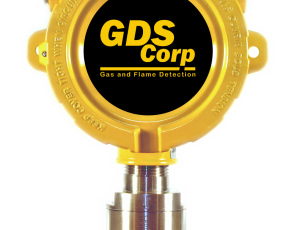No matter the type of facility in which oil and gas workers are located, they often deal with volatile organic compounds. Better known as VOC, they can produce a variety of serious ailments including kidney and nerve damage if workers are exposed to them over a long period of time. However, as technology has improved over the years, there have been numerous advances in the development of VOC sensors that can ensure workers, equipment, and facilities are protected from harm. To gain a better understanding of the benefits these sensors provide, it’s imperative to know more about these sensors and the technology associated with them.
Detecting VOC
To detect volatile organic compounds, sensors use a variety of components. One of the most effective involves the use of photoionization, which ionizes molecules with high levels of ultraviolet light and measures the flow of electrons. In addition, a VOC sensor can monitor for any combination of toxic or combustible gases, making it a very versatile sensor for a variety of oil and gas facilities.
Networking Capabilities
As VOC detector technology has continued to improve, today’s sensors have increased networking capabilities. Able to digitally transmit data across networks, they use microprocessors that combine a database and web server to monitor gas levels and make any necessary configuration changes. By being able to make these changes in real-time, these sensors can collect and send data to smartphones, tablets, and laptops and allow essential personnel to make quick decisions in the event of an emergency.
Alarm Capabilities
By having extremely sensitive programmable controls, a volatile organic compound sensor can eliminate the potential for false alarms and allow managers to set strict security parameters. By doing so, this eliminates the chance an unauthorized employee or other individual will change calibration settings which could alter the accuracy of the sensors. Due to this technology, these sensors have an industry-wide reputation for rarely giving a false alarm, making them very accurate and reliable in almost any work environment.
Relays and Displays
As with many other sensors, a VOC gas monitor has a variety of options when it comes to alarm relays and displays. One of the biggest advances with these sensors is the optional alarm relays, making it possible to attach warning strobes or horn sounders directly to the sensors in order to provide more ways to alert workers when dangerous situations arise. Along with these alarm relays, most sensors come equipped with full-color back-lit displays that make them very easy to see at a distance. Visual alerts include having the display change colors from bright yellow to red, indicating the danger level has increased from a cautionary level to one of extreme danger.
Whether working around paints, cleaning products, building materials, or industrial solvents, it’s clear volatile organic compounds can pose an extreme danger in the workplace. But by making good use of sensors designed to carefully monitor for high levels of toxic or combustible gases, workers can find themselves safer than ever while on the job.

